OnePlus 11 vs Oppo Find X5 Pro
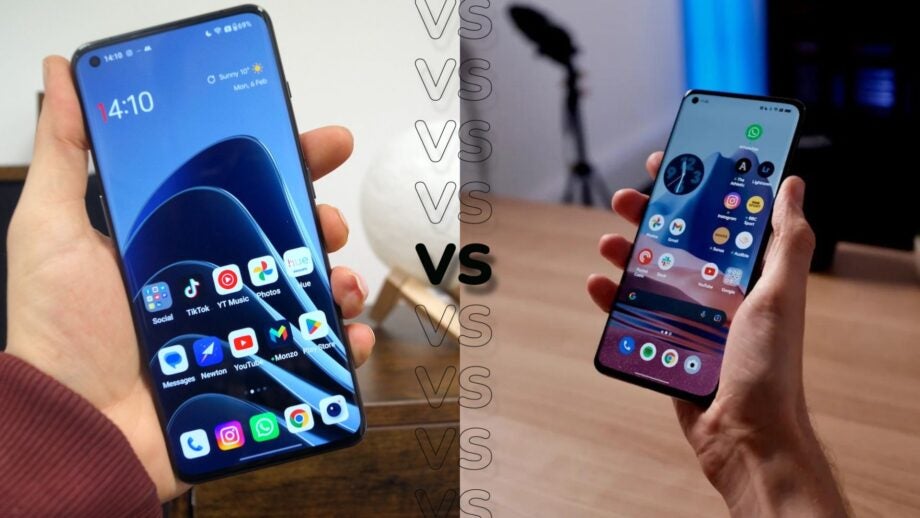
The OnePlus 11 is official, but how does it compare to parent company Oppo’s flagship, the Oppo Find X5 Pro?
While Oppo’s flagship is comfortably premium at over £1000, there are a surprising number of similarities between it and the more affordable £729 OnePlus 11 that might tempt you towards the cheaper, yet still capable, option.
If you’re trying to decide between the OnePlus 11 and Oppo Find X5 Pro, we’ve got you covered.
Design and screen
If you look at the OnePlus 11 and Oppo Find X5 Pro head-on, you may struggle to find any real difference between the two. They both sport the same 6.7in AMOLED display with curved edges and a near edge-to-edge experience, complete with an aluminium frame.
In fact, even the dimensions are near-identical, measuring in at 8.5mm thick, though the Find X5 Pro is slightly weightier at 218g compared to OnePlus’ 205g.
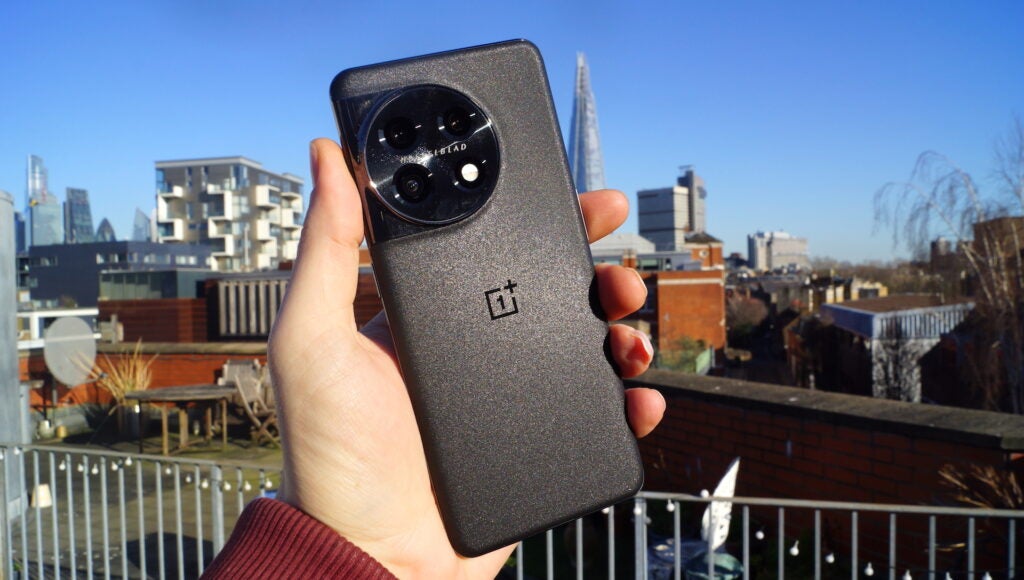
However, flip the smartphones over and you’ll begin to see the key difference in design: the camera bump. While both are fairly stylish in design, they take very different approaches.
OnePlus has gone down the circular camera housing route with claims that it was inspired by black holes. While that’s certainly just some nice marketing, the black sparkly housing does catch the eye when the light hits it. It’s also encased in stainless steel and moulds to the edge of the phone in a way not too dissimilar to the Samsung Galaxy S22.
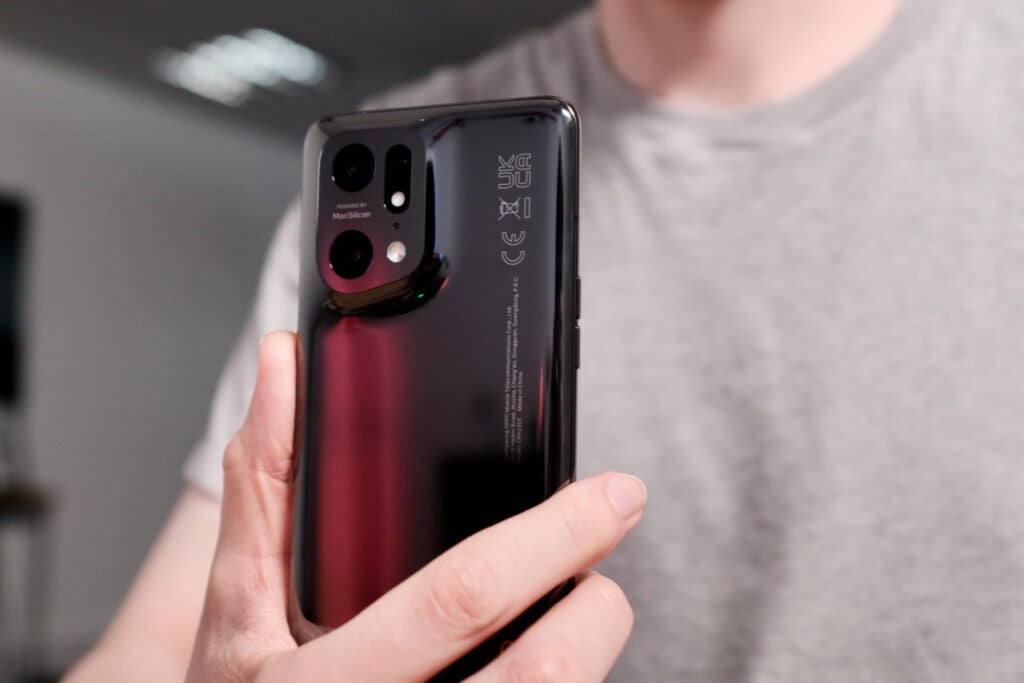
The camera housing of the Oppo Find X5 Pro, on the other hand, appears to be a part of the rear panel of the phone with an impressive curved design that makes it look like the cameras are pushing their way to the surface from within. It’s a unique, sleek look and one that I personally hope Oppo keeps for its next-gen smartphone range expected this year.
Camera bump aside, both the OnePlus 11 and Oppo Find X5 Pro are fairly limited when it comes to colour options, with the latter available in Titanium Black and Eternal Green while the latter is available in Glaze Black and Ceramic White. It’s hardly the vibrant colours of the iPhone 14, is it?
The two are fairly evenly matched when it comes to display tech too. Regardless of which option you go for, you’ll be presented with a gorgeous 6.7in AMOLED display with 120Hz refresh rate and premium display tech like LTPO that allows for a dynamic refresh rate to save battery life, a QHD+ resolution and support for HDR10+.
Both also provide support for 10-bit colour to complement the 10-bit camera capture, meaning the displays can show a whopping 1.07 billion colours.
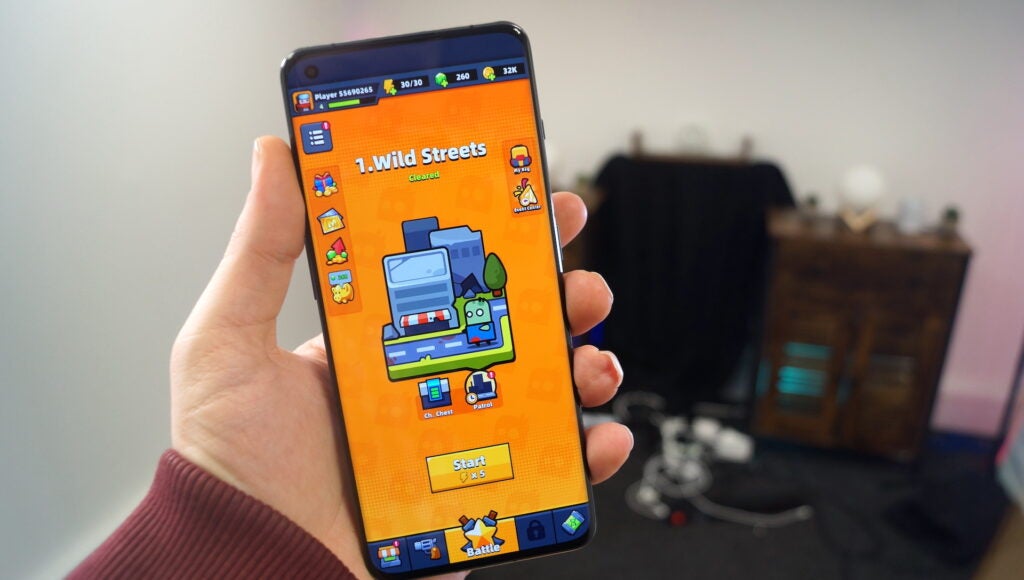
Dive a little deeper though and it seems that OnePlus could have the edge with a faster 1000Hz touch response rate compared to the 240Hz from Oppo’s 2022 flagship, and it also supports Dolby Vision HDR too.
Regardless of the phone you opt for you’ll get a premium display experience, but it seems like the OnePlus 11 could have a slight edge over its 2022 competitor.
Cameras
The Oppo Find X5 Pro had one of the most capable camera offerings in 2022 with its combination of a 50MP main and a 50MP ultrawide that delivered impressive results in both well-lit and low-light conditions in testing, with our reviewer claiming that the phone offers “comfortably the finest ultra-wide shots I have taken on a phone”.
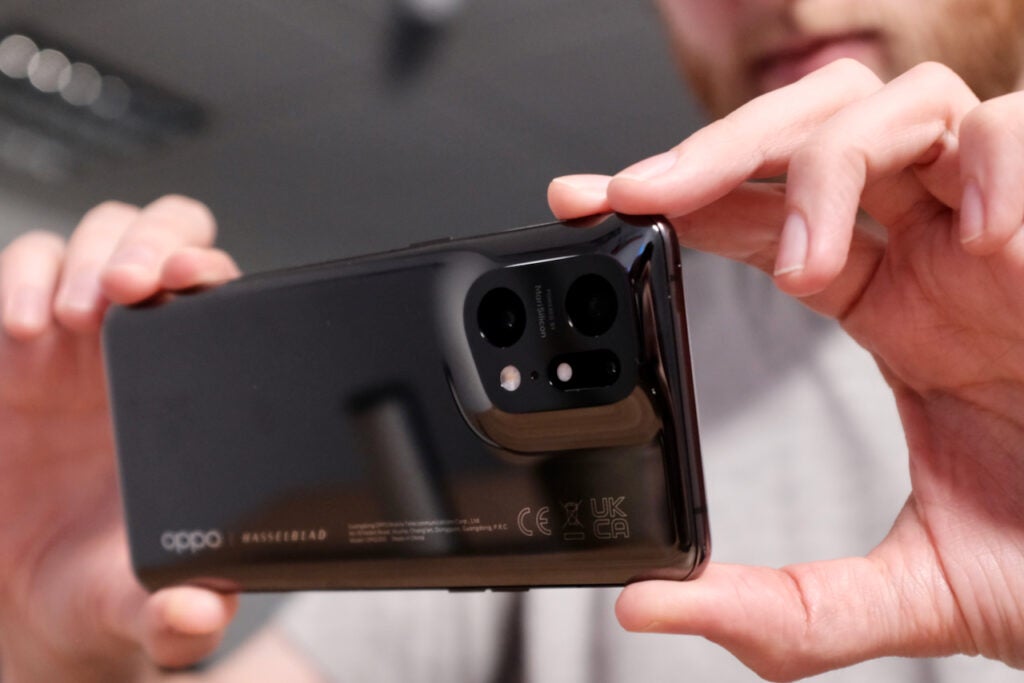
However, that’s not true of the third lens in the rear camera offering of the Find X5 Pro, a paltry 13MP telephoto lens. Considering the high resolution and attention to detail that went into the main and ultra-wide lenses, it seems like an oddity to include a much lower-quality telephoto lens that we found disappointing in testing.
That’s where OnePlus swoops in with the OnePlus 11’s trio of a 50MP main, 48MP ultra-wide and 32MP telephoto lens that provides a much more high-end experience across the board. OnePlus cameras have always been fine, but we think the OnePlus 11 cameras really take it up a notch, especially in the low-light department, sucking in plenty of light to deliver vibrant, detailed snaps in challenging light conditions.
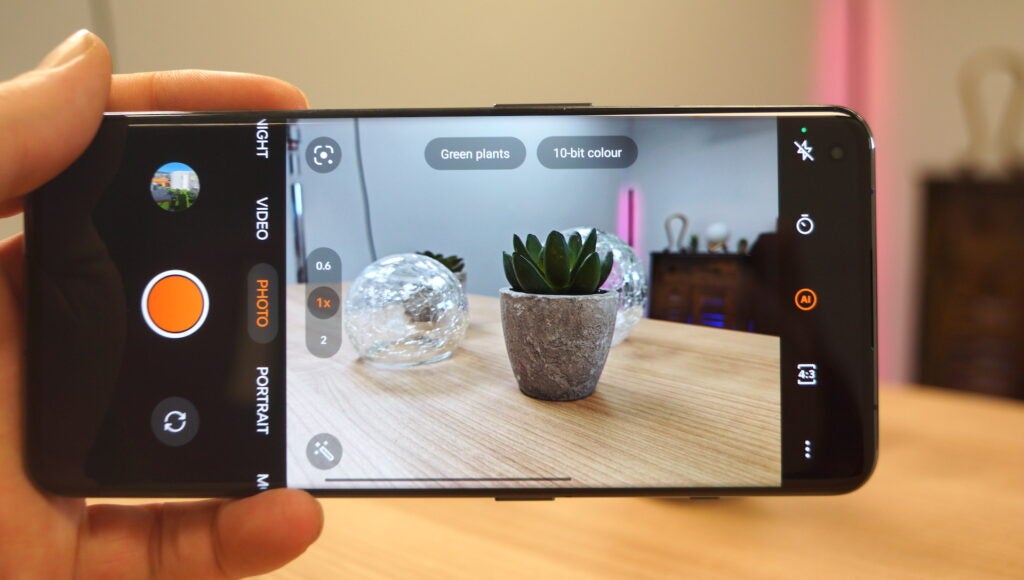
Though the main 50MP snapper is the main star, the ultra-wide and telephoto lenses also deliver crisp imagery and impressive colour tuning that makes it difficult to tell which lens was used to take a snap – aside from the angle of the photo, of course.
Oppo claws it back in the front-facing camera department with a 32MP selfie camera compared to the 16MP selfie camera of the OnePlus 11, though both are limited to fixed focus and a maximum 1080p video recording. They’re good for selfies and video calls, but not much else.
While it might sound like the OnePlus 11 has the upper hand, it’s not a cut-and-dry win. The Find X5 Pro sports a special NPU dubbed the MariSilicon X Imaging NPU that’s dedicated to improving the photography chops of the camera system. It could give the Find X5 Pro the edge when it comes to camera performance, but we’ll have to test them side-by-side to say for sure.
Performance
Performance is an area where OnePlus pulls forward simply by having the newer phone and thus, a newer chipset available. That said, the OnePlus 11 boasts Qualcomm’s latest top-end chipset, the Snapdragon 8 Gen 2 paired with either 8 or 12GB of RAM, while the Find X5 Pro features last year’s Snapdragon 8 Gen 1 chipset with 12GB of RAM as standard.
While you’re not really going to see much of a day-to-day difference between the two top-end chipsets, the OnePlus 11 could pull slightly further away from the Find X5 Pro when it comes to more processor- and GPU-intensive tasks like playing high-end mobile games or rendering that video edit you just put together.
That’s backed up by our benchmark results, which you can see here:
That’s paired with either 128GB of UFS 3.1 storage or 256GB of UFS 4.0 storage if you opt for the OnePlus, while the Find X5 Pro has a single 256GB option available. It’s worth noting that neither boast a microSD card slot for storage expansion, so it may be worth opting for the 256GB option if you plan on holding onto your next smartphone for a while.
For a more thorough spec comparison, take a look at the below:
Specs aside, both smartphones offer support for Android 13, though Find X5 Pro users will have to update from the Android 12 that the phone originally shipped with in 2022.
However, neither use stock Android, with OnePlus opting for OxygenOS while Oppo utilises its ColorOS. While there are still notable differences between the operating systems, OnePlus is owned by Oppo and, over the past few years, fans have noticed that OxygenOS and ColorOS are getting closer in terms of design and functionality.
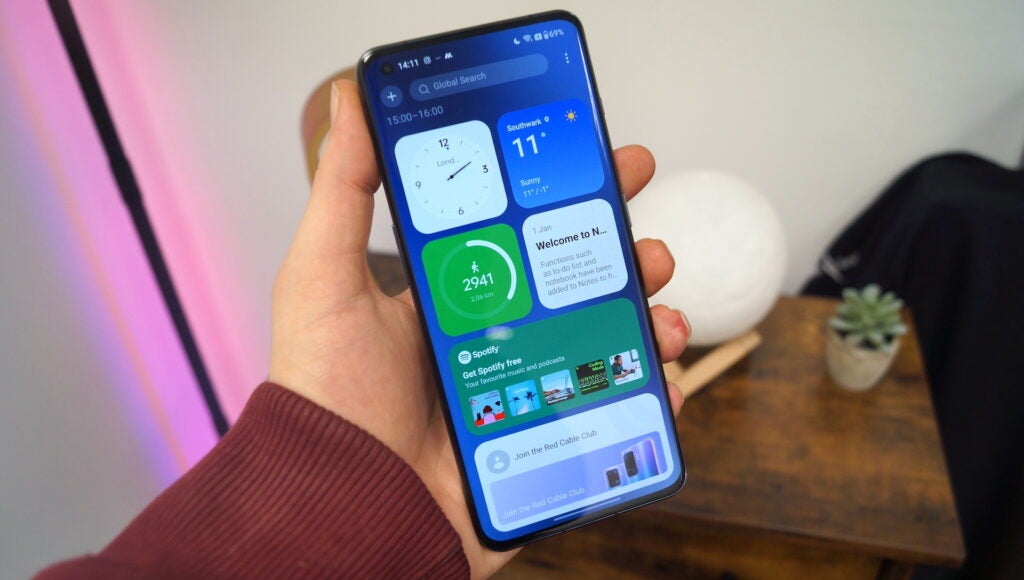
The two still have distinctly different UI colour schemes with Oppo utilising its ‘aquamorphic’ design language while OnePlus puts much of the UI customisation on the user, but no matter which you buy, expect a top-end Android experience with handy tweaks and a lack of bloatware compared to other skins like Xiaomi’s MIUI.
Both smartphones boast a 5,000mAh battery that provides comfortable all-day use and even the ability to power into a second day if you’re not hammering HDR video and battery-intensive games, though the improved battery efficiency of the OnePlus’ chipset means that it’ll likely last a little longer in most scenarios.
It’ll also charge faster with 100W charging that provides a full 100% charge in 27 minutes, though the Find X5’s 80W charging isn’t too far behind with a full charge in just over 30 minutes in testing.
Price
Price is another key differentiator between the two flagships – and believe it or not, the OnePlus 11 is much cheaper than the Oppo Find X5 Pro.
In fact, looking at the RRP, the OnePlus 11 is £320 cheaper than Oppo’s 2022 flagship, though with the caveat that it’s available for much less than RRP in early 2023.
The OnePlus 11 is up for pre-order now ahead of release on 16 February 2023.
Here’s how much the OnePlus 11 costs:
- 128GB: £729
- 256GB: £799
And here’s the Oppo Find X5 Pro:
- 256GB: £1049
Verdict
The OnePlus 11 and Oppo Find X5 Pro are very similar not only in terms of general design but display, cameras, performance and even battery life – which makes the fact that the OnePlus 11 is available for £320 cheaper than the Find X5 Pro so surprising.
The Find X5 Pro could have the edge in photography with its dedicated MarieSilicon imaging chip, and its design is truly stunning, but there isn’t really enough to tempt users in 2023 when you can get something so similar for so much less.
Jargon buster
mAh
An abbreviation for milliampere-hour and a way to express the capacity of batteries, especially smaller ones in phones. In most cases the higher the mAh, the longer the battery will last but this isn’t always the case.
OLED and AMOLED
Types of displays that use self-lighting pixels to provide greater contrast and more vibrant colours than a typical LCD display, as well as sharper blacks.
Refresh Rate
The number of times the screen refreshes itself per second.
5G
Offering faster download and upload speeds when compared to 4G. Great for game streaming and HDR video playback. Not supported everywhere yet and speeds vary wildly.


